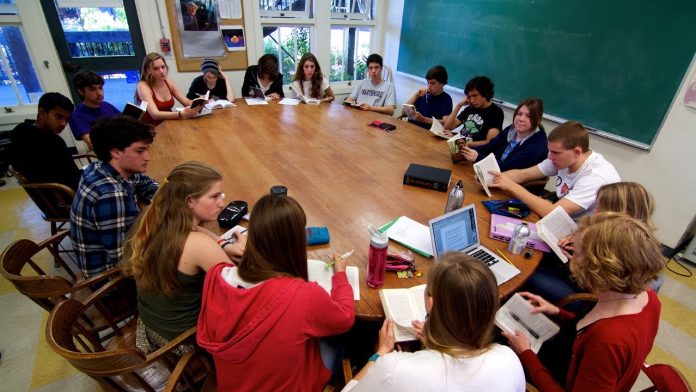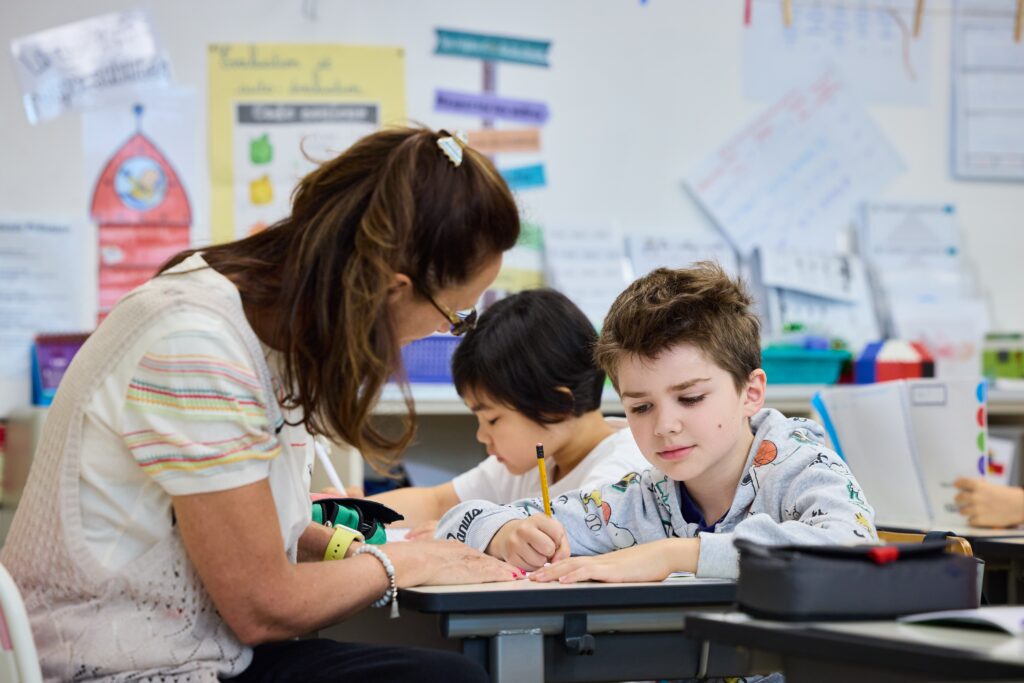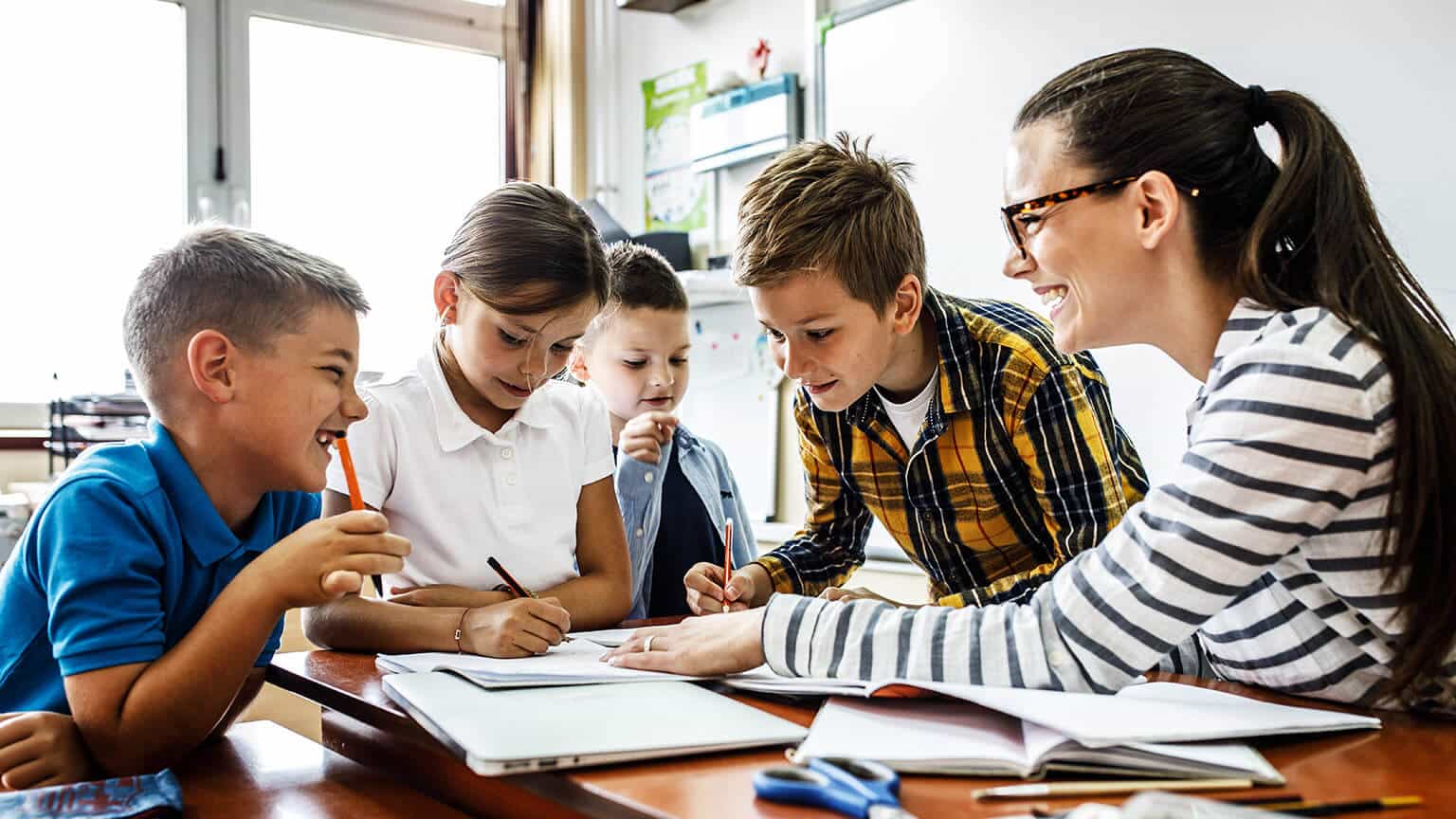The benefits of collaborative learning in the classroom, a teaching approach where students work together to achieve common learning goals, offers a multitude of advantages both academically and socially. In this article, we will explore in detail the various positive aspects of this innovative educational method.

The Benefits of Collaborative Learning Fostering Teamwork
One of the cornerstones of collaborative learning is the development of interpersonal skills, thus promoting effective communication and building trust within the classroom.
A. Development of interpersonal skills
First, effective communication, essential in any collaborative learning process, is the first interpersonal skill highlighted. Group activities provide students with a dynamic platform to refine their ability to express their thoughts and ideas clearly and concisely. Thus, by prioritizing verbal and nonverbal exchange, students learn to navigate the complex landscape of communication, a valuable asset both in the educational context and in their daily lives.
Trust among students emerges as a natural result of this improvement in interpersonal skills. By better understanding the nuances of communication, students develop greater confidence in their ability to share their thoughts with and receive them from their peers. This climate of trust is essential for establishing an environment conducive to collaboration, as it eliminates barriers that could inhibit active participation.
B. Encourage collaboration
Next, in addition to developing interpersonal skills, encouraging collaboration is another crucial dimension of collaborative learning. Group projects serve as powerful catalysts, encouraging students to join forces to achieve common goals. Finally, these collective assignments offer a unique opportunity to leverage the diversity of knowledge and skills within the classroom.
Additionally, peer-to-peer learning activities complement this process by encouraging closer and more direct collaboration between students. When working together on shared tasks, students find themselves in a setting where the exchange of ideas becomes the foundation of learning. This direct interaction fosters a deeper understanding of the topics covered, thus strengthening knowledge while stimulating the desire to learn from one another.
The Benefits of Collaborative Learning Cognitive Development
Cognitive development, a key aspect of collaborative learning, encompasses expanding critical thinking and enhancing creativity. These two dimensions work together to provide students with essential cognitive skills.
A. Expansion of critical thinking
Analyzing diverse perspectives is emerging as a crucial skill that collaborative learning cultivates in students. By working together, students are exposed to a variety of points of view, often different from their own. This diversity of ideas stimulates their critical thinking, prompting them to evaluate, compare, and question different approaches to the same problem. This exposure to intellectual diversity prepares them for a deeper and more nuanced understanding of topics, thereby developing their ability to think analytically.
Collaborative learning creates an environment where the exchange of ideas is valued. The resulting constructive debates foster students’ intellectual growth, encouraging them to question their own beliefs and consider alternative perspectives. Thus, expanding critical thinking goes beyond simply acquiring knowledge; it instills a thoughtful and analytical approach that proves valuable throughout life.
B. Improving creativity
Brainstorming sessions and creative problem-solving exercises play a fundamental role in enhancing the creativity of students engaged in collaborative learning. These activities are designed to encourage imaginative thinking, thereby stimulating the participants’ creativity.
Students learn to think innovatively, consider unconventional solutions, and explore original ideas. The collaborative nature of these exercises creates a fertile ground for the free expression of ideas, eliminating inhibitions that could hinder the creative process. This intellectual freedom fosters the discovery of innovative solutions to challenges, strengthening students’ ability to solve problems creatively.
Improving academic performance
Collaborative learning is distinguished by its significant impact on improving academic performance, facilitated by the sharing of knowledge and the motivation resulting from collective successes.
A. Knowledge sharing
One of the most significant benefits of collaborative learning is the development of a deep collective understanding of the topics covered. By working together, students bring diverse perspectives and individual knowledge, filling in any gaps their peers may have. This enriching collaboration creates educational synergy, where the total of the group’s knowledge far exceeds what each student could achieve individually.
This collective understanding goes beyond simple fact memorization; it promotes deep assimilation and critical thinking. Group discussions, the exchange of ideas, and collective problem-solving contribute to more holistic knowledge acquisition. Thus, collaborative learning becomes an effective way to consolidate concepts, strengthen academic foundations, and prepare students for more complex intellectual challenges.
B. Motivation by group achievements
Celebrating shared successes in collaborative learning provides powerful motivation for students. When each group member contributes to collective success, it creates a sense of belonging and responsibility. This dynamic fosters deeper engagement in the educational process because students are aware of the positive impact their contribution has on the entire group.
Learning thus becomes a rewarding collective experience, with each success strengthening the bond between group members. This intrinsic motivation propels students toward excellence, encouraging them to surpass their expectations. The idea that their success contributes to the overall success of the group creates a culture of mutual support and emulation—key elements for maintaining a positive dynamic within the classroom.
Social and emotional growth
Collaborative learning plays a vital role in students’ social and emotional growth, with a particular focus on building a sense of belonging and developing emotional intelligence.
A. Building a sense of belonging
Inclusivity is at the heart of collaborative learning, creating an environment where every student feels truly connected. One way this manifests is through building a strong sense of belonging. Working together on shared projects, exchanging ideas, and solving problems collectively create meaningful connections between students. This emotional connection fosters a climate where every student feels not only accepted but also valued.
This sense of belonging reduces feelings of isolation that can often arise in an educational setting. Students realize they are part of a learning community, where each contributes uniquely to the collective success. This creates a positive learning environment where individual differences are celebrated, and everyone feels encouraged to express themselves freely without fear of judgment.
B. Development of emotional intelligence
Working collaboratively provides a natural platform for developing emotional intelligence. Constant interactions within a group teach essential skills such as empathy and constructive conflict management.
Empathy, the ability to understand and share the emotions of others, is strengthened when students collaborate. By understanding the diverse perspectives and experiences of their peers, students learn to take a broader perspective, thereby strengthening their emotional intelligence. Working together on engaging projects also encourages the recognition of emotions, contributing to a better understanding of social dynamics within the classroom.
Collaborative learning stands as a fundamental pillar of an education centered on the holistic development of learners. Its benefits, whether academic, social, or societal, attest to its transformative power. However, on this path toward more collaborative education, it is imperative to address challenges, adopt innovative approaches, and foster a cooperative educational culture. By joining forces, we can create an education system that produces competent, creative individuals ready to meet the challenges of a constantly changing world.










